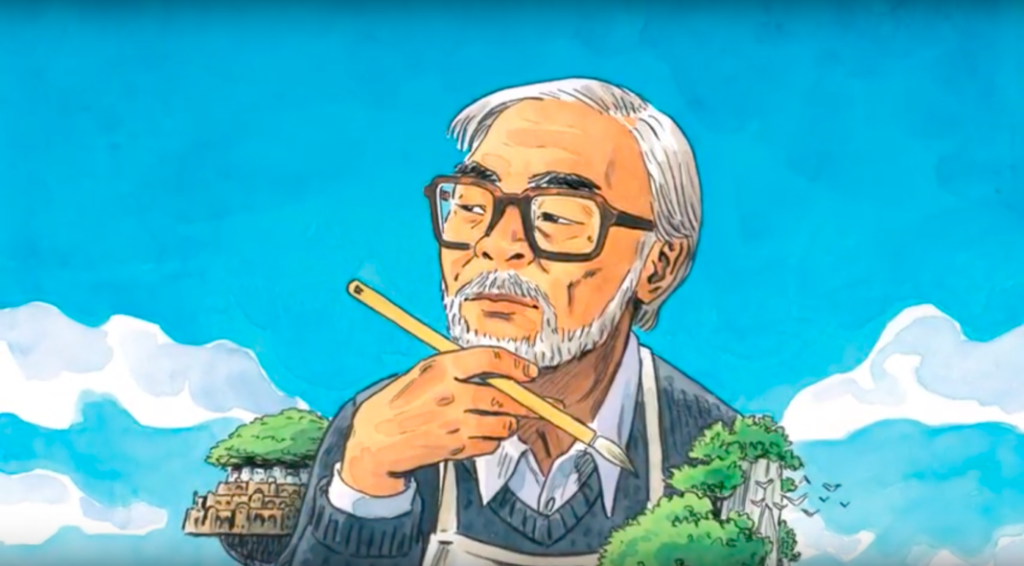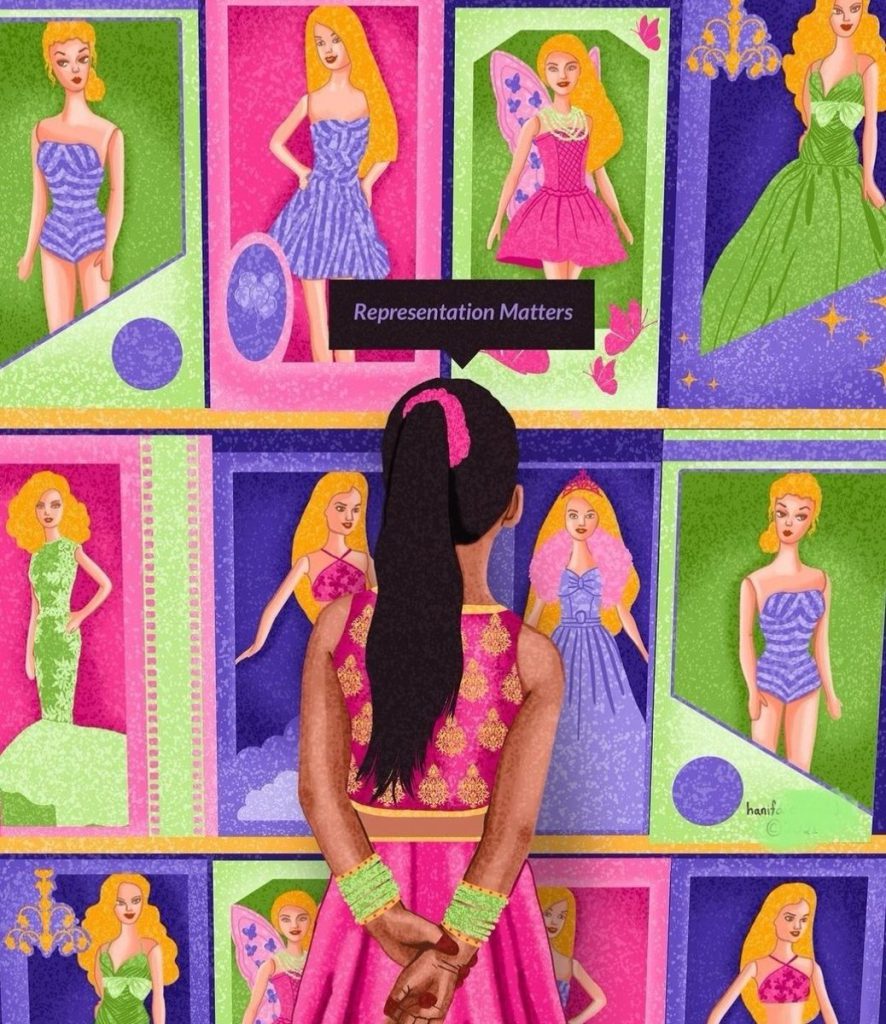Hayao Miyazaki the renowned Japanese animator, director, and storyteller has made a name for himself (and with good reason) across the world. Whether you know him for his works in film or by his company, Studio Ghibli, or even just the iconic figure of Totoro, the work of Miyazaki has reached everyone at some point in their life. Miyazaki has been critically acclaimed for his work particularly in film for his simplistic yet lyrical style. With his knack for scenic yet simple artwork as well as allegorical storylines and characters, Miyazaki has touched millions of hearts of all ages and left them in awe and wonder at his work.
“I believe that children’s souls are the inheritors of historical memory from previous generations. It’s just that as they grow older and experience the everyday world that memory sinks lower and lower. I feel I need to make a film that reaches down to that level, if I could do that, I would die happy.”
– Hayao Miyazaki (6)
Background
Miyazaki was born in Tokyo, Japan on January 5, 1941 – Miyazaki has experienced the perils of World War II. His father’s company, a manufacturing company that produces parts for Zero fighter places, has influenced Miyazaki’s love for designing as well as planes and flying which is evident in his work. (2) After graduating with a degree in economics and political science from Gakushūin University in 1963 he immediately turned his focus to animation. After working entry-level and animator jobs at several different animation companies, he rose in the animation industry, bouncing between film and manga. (1) As Miyazaki’s work and company, Studio Ghibli, gained popularity, the movement to the West was inevitable. He even went on to win the 2003 Academy Award for Spirited Away (2002) for Best Animated Feature and was nominated for The Wind Rises (2013) and Howl’s Moving Castle (2004) for the same category. (1)
“The Totoro Company”
Together with life long friend and animation partner Isao Takahata, and producer Toshio Suzuki they launched Studio Ghibli in 1985. (2) Studio Ghibli since 1985 has produced many films and short films showcasing the works of both animators. After the release of My Neighbor Totoro the financial success of the company was secured due the high amount of Totoro merchandise – hence the reason why Studio Ghibli is known for being “the Totoro Company” or in some cases the one with the big bunny. (1) Studio Ghibli has dominated the Japanese animation industry much like how Disney and Pixar are the dominant companies in the West. (6)
Iconic Works
Spirited Away (2002)
My Neighbor Totoro (1988)
Howl’s Moving Castle (2004)
Kiki’s Delivery Service (1989)
Princess Mononoke (1997)
Ponyo (2008)
Laputa: Castle in the Sky (1986)
Nausicaä of the Valley of the Wind (1984)
Hidden Gems
Whisper of the Heart (1995)
The Wind Rises (2013)
Porco Rossco (1992)
Only Yesterday (1991)
Panda! Go, Panda! (1972)
Anee of Green Gables (1979)
From Up on Poppy Hill (2011)
Why His Work is Beloved
There is no doubt that Miyazaki and Studio Ghibli have a cult following and many films can be considered cult classics. So why is it that his and his studio’s work is watched by millions around the globe? And are they worth the hype?
Known for its adventurous and fantastical stories set in somewhat utopian societies, the more you look at Miyazaki and the rest of Studio Ghibli works, you will find deep themes that reach various audiences. (4) Regardless of age, gender, identity, etc, Ghibli films resonate with a lot of people. It shows the harsh realities of society and change yet makes it sweet and tolerable to the point you truly are able to look at the character’s story and look at yourself and think. It may sound weird, but Ghibli films have a way of motivating you to reflect on yourself ,whether you are going through difficult times or not. They make you ask questions about the film’s message, your feelings toward it during and after watching, what it says about society, and the paths your life or the characters could take (because we love open endings).
In Monica Uszerowicz’s article on Polygon, she states that Studio Ghibli films are her coping mechanism when she is dealing with difficult times in her life. Ghibli films give her a reason to keep moving on through the harsh reality of life. (5)
“The base reality of Ghibli films is usually like our own. There are no superheroes, only complex characters whose bravery contends with self-doubt, and whose doubt regularly gives way to love. Every screening teaches me something about how to live in the cold, punitive real world with trust and compassion, which is hard to do.”
– Monica Uszerowicz, Studio Ghibli’s movies are my coping mechanism
Uszerowicz continues her article to note how Miyazaki has been open and adamant about his pessimism when he stated “Today, all of humanity’s dreams are cursed somehow. Beautiful yet cursed dreams.” Yet Miyazaki has also been equally adamant in encouraging people to not let the toxins of reality hinder their desire to live. (5) In his films, the main character always comes face to face with the stresses of reality and regardless of if the outcome is good, bad, or bittersweet the characters are always moving, looking ahead for themselves. He reminds us of the power of kindness, curiosity, and having dreams despite any current adversities in our lives.
“Always believe in yourself. Do this and no matter where you are, you will have nothing to fear.”
– Hayao Miyazaki (4)
Themes of His Work
Within every Miyazaki work there are recurring themes that are important for everyone to listen to and learn about. These themes are so subtly placed throughout his films you don’t realize you’re learning about them until the end. Themes on environmentalism, feminism, friendship, Japanese culture and history, pacifism, nature vs. technology, identity, and the stereotypes of good and evil. (2, 7)
Miyazaki and Ghibli films can be beloved without looking for the deeper meanings and themes and simply for the animation itself. Miyazaki has a distinct artistic style for which he draws his characters and scenes that have become identifiable by Ghibli fans. Separating from the standard look of anime characters (big glossy eyes, and spiky or unnatural hair) Miyazaki opted for a more realistic look for his characters. (2) Miyazaki has also been acclaimed for his scenic scenes of landscapes that are pleasing to the eye and leave you in awe. (4) His landscape scenes are usually played in complete silence with no background music to accompany these scenes. It’s a moment of silence to appreciate the artwork and for the character to appreciate the scenery in front of them, the beauty of the natural world. However, Ghibli music is also beautiful.
Influences on Animation
Ever since 1979 when Miyazaki debuted as a director he has had a great influence in the world of animation and film, inspiring many directors even internationally. His motivations behind his animations and films have inspired the founder of PIxar, John Lsseter, Wes Anderson’s Isle of the Dogs, Guillermo del Toro’s Pan’s Labyrinth, and Makoto Shinkai on Your Name. Miyazaki has inspired directors to take a quieter look and feel for their movies, pulling back from the usually big bangs and surprises seen in films. (3, 6)
Sources
https://www.britannica.com/biography/Miyazaki-Hayao
https://controlforever.com/read/influence-miyazaki-animation/
https://www.bbc.com/news/world-asia-38074088
https://moviesnerdinessandmore.wordpress.com/2012/09/24/miyazaki-themes-and-motifs/
Cover Photo Source: https://wethepvblic.com/hayao-miyazaki-studio-ghibli-netflix/



